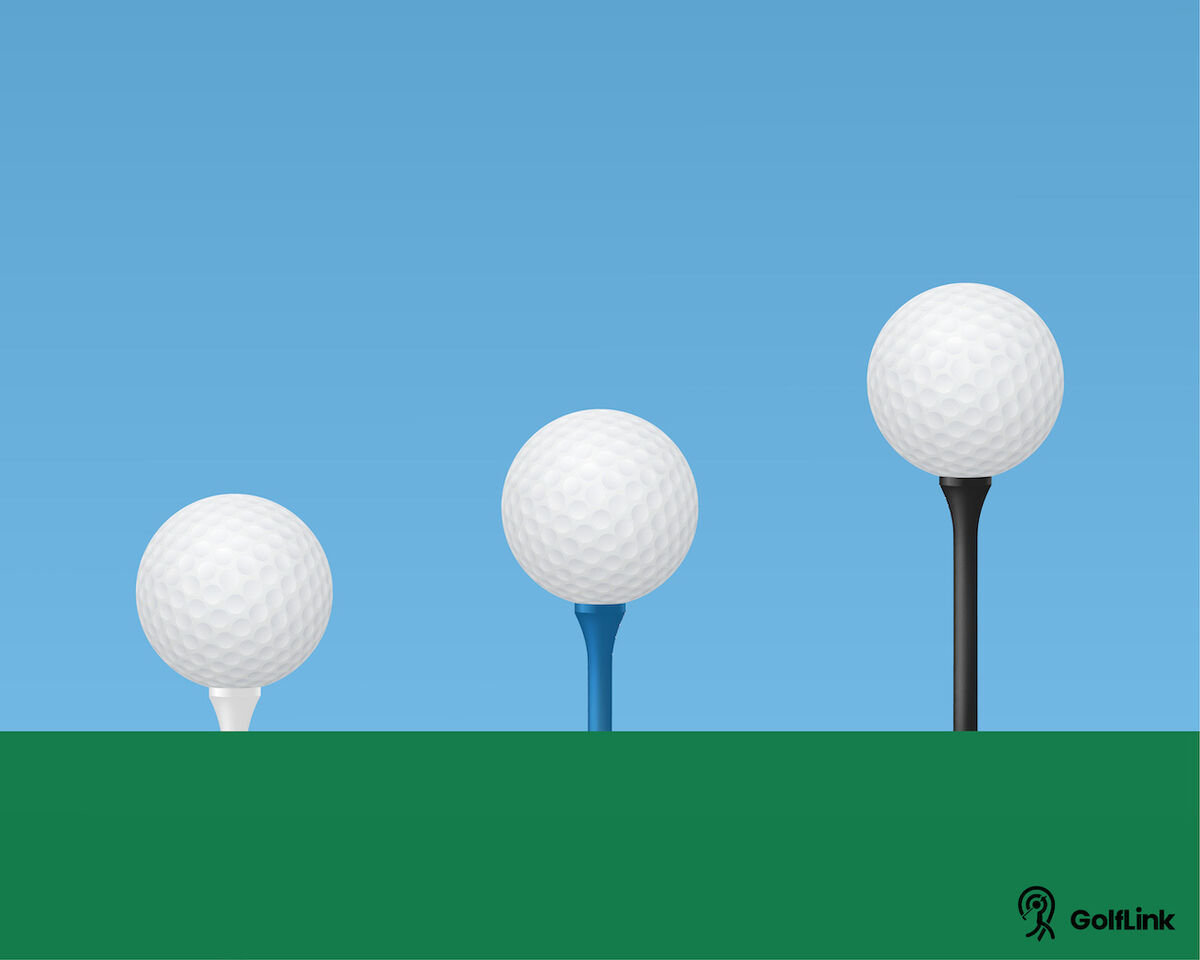Finding the Correct Tee Height to Maximize Your Drives

Finding the correct tee height is important for your game, and often undervalued. Tee height has a big impact on several aspects of your tee shots. Knowing how to properly tee your golf ball along with some situational knowledge can help you find the short grass with your driver, fairway woods, hybrids, and irons.
Correct Tee Height by Club
Not all clubs in your bag require the same tee height to maximize their production. Knowing where each of your clubs should line up with the golf ball will help you get the best results.
Driver Tee Height
Driver tee height has evolved over time because of advancements in driver technology. With the standard driver head today measuring 460cc, longer golf tees have become the norm to adapt to the larger heads. The most popular tee size is now 3 1/4-inches, as opposed to 2 3/4-inch which was the most popular before head sizes exceeded 350cc.
For your driver, you should see half of the golf ball above the crown of your driver at address. Your driver swing is ascending, with the optimal attack angle between +3.0 to +5.0 degrees, as opposed to an iron which you should hit with a descending strike.
Because you want to make contact with the golf ball just as your upswing begins with your driver, having half of the golf ball teed above the crown allows you to make the best contact.
Fairway Wood Tee Height
Similar to your driver, fairway woods should also be teed above the crowd of the clubhead. With the size of a fairway wood head, slightly less than half of the golf ball is ideal. If you're a percentage person, call it 40 percent of the golf ball. This will promote an optimal attack angle of neutral (0 degrees) to slightly ascending with a 3 or 5-wood.
Hybrid Tee Height
Continuing the trend of getting lower, your hybrid clubs should be teed so that about 1/4 of the golf ball is above the crown of the clubhead. While a hybrid is built similar to a fairway wood, it also has many iron qualities so the swing with a hybrid is neutral to slightly descending. Teeing the golf ball lower with hybrids will help you make proper contact.
Iron Tee Height
An iron swing has a descending blow at impact, so your tee height should reflect that. The absolute most you want with irons is the same 1/4 of the golf ball over the top of the clubhead, similar to your hybrid. Many players prefer to drive the tee as far into the ground as possible so that it's barely noticeable. Remember, you still want your iron shot to spin once it hits the green. Having the ball teed too high could compromise your spin when approaching par 3s.
Teeing Too High
Teeing your golf ball higher than recommended has some situational benefits. Here are the pros and cons.
- Pros: If you find yourself in a situation where the wind is at your back and a slightly higher ball flight will get you some additional yardage, teeing the ball slightly higher can payoff.
- Cons: Teeing the ball too high commonly leads to sky marks on the crown of your driver, which are nearly impossible to remove. In addition, having the ball teed too high can lead to significant distance loss.
Teeing Too Low
Teeing your golf ball too low also has some situational benefits, but with today's driver head sizes, you'll find little to no benefit doing so.
- Pros: If you find yourself playing on a windy day, teeing the ball lower when the wind is at your face can be beneficial. This allows the golf ball to travel lower and slightly under the stronger winds above.
- Cons: For the most part, teeing the ball too low leads to contact lower on the clubface and less distance.
Consistent Tee Height
Finding the proper tee height and repeating it consistently takes time and practice. Thankfully, several companies produce golf tees that have height indicators so it's easy to repeat your process. Check out this article for some suggested models along with a little history on what led the game of golf to the modern tee it has today.